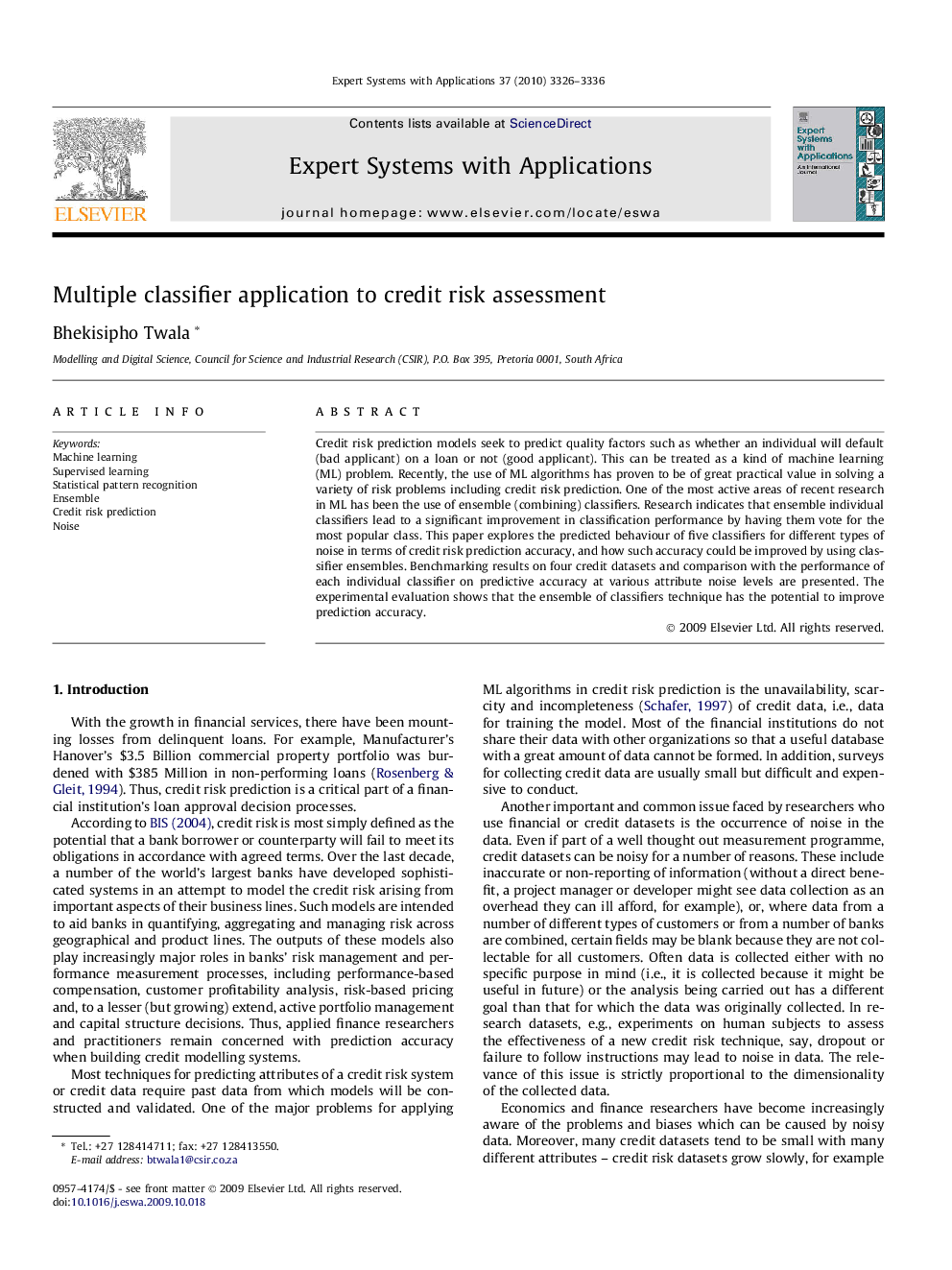| Article ID | Journal | Published Year | Pages | File Type |
|---|---|---|---|---|
| 388701 | Expert Systems with Applications | 2010 | 11 Pages |
Credit risk prediction models seek to predict quality factors such as whether an individual will default (bad applicant) on a loan or not (good applicant). This can be treated as a kind of machine learning (ML) problem. Recently, the use of ML algorithms has proven to be of great practical value in solving a variety of risk problems including credit risk prediction. One of the most active areas of recent research in ML has been the use of ensemble (combining) classifiers. Research indicates that ensemble individual classifiers lead to a significant improvement in classification performance by having them vote for the most popular class. This paper explores the predicted behaviour of five classifiers for different types of noise in terms of credit risk prediction accuracy, and how such accuracy could be improved by using classifier ensembles. Benchmarking results on four credit datasets and comparison with the performance of each individual classifier on predictive accuracy at various attribute noise levels are presented. The experimental evaluation shows that the ensemble of classifiers technique has the potential to improve prediction accuracy.
